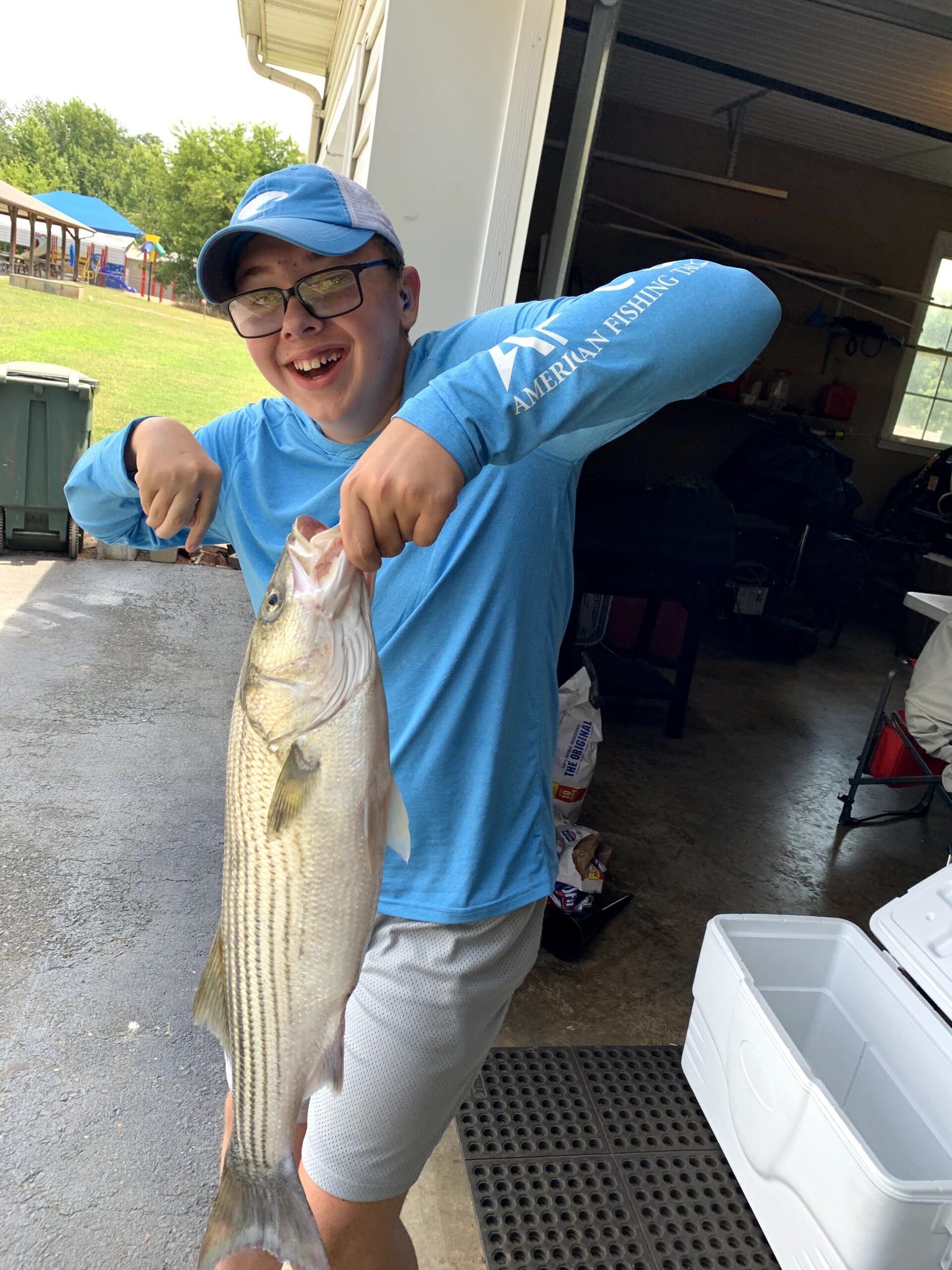Freshwater striped bass fishing in reservoirs across the southern United States offers a thrilling angling experience. One highly effective method to target these elusive predators is lead core trolling with artificial baits. By utilizing multiple rod spreads, swim baits, buck tails, paying attention to things like: knots, swivels, and depth control techniques, you can significantly increase your chances of success. In this guide, we will walk you through the basics of lead core trolling for freshwater striped bass, and for more detailed information, be sure to check out our YouTube playlist linked in this article below.
Choosing the Right Equipment:
To begin lead core trolling, start with a medium to heavy action trolling rod and open-face level wind reel combo. Choose a reel with sufficient space to hold the bulkier lead-core line. Ensure your reel can accommodate at least 100 yards of 20 to 30-pound test monofilament or braided line as backing for your lead core line.
Understanding Lead Core Line:
Lead core line is a specialized fishing line consisting of a lead center core wrapped in a durable nylon sheath. It sinks at a rate of approximately 3 to 5 feet per color (a color is about 10 yards or 30 feet). The commonly used 27-pound test lead core line allows for optimal depth control without compromising durability.
Selecting Effective Lures:
Swim baits and buck tails are proven choices when it comes to enticing freshwater striped bass. Opt for swim baits with realistic color patterns and lifelike swimming actions. Buck tails, available in various sizes and colors, imitate baitfish and entice predatory strikes. Experiment with different lure styles and colors to find what works best in your local reservoir. We are a big fan of Striper Sniper soft plastics, made right here in North Carolina.
Deploying Multiple Rod Spreads:
To maximize your coverage and increase your chances of hooking striped bass, deploy multiple rods with varying lengths of lead core line. The general rule is to position the rod with the shortest lead core line farthest from the boat and gradually increase the length as you move closer. A typical spread configuration consists of two to six rods, each with a different length of lead core line, adjusting the depth to the fish, as needed.
Essential Knots and Swivels:
To connect your lead core line to a monofilament or fluorocarbon backing, use a reliable knot like the one shown in the video series below. Additionally, incorporate high-quality ball-bearing swivels between the leader and the lead core main line to minimize line twist and enhance lure action.
Mastering Depth Control:
Achieving precise depth control is crucial in lead core trolling. Monitor the sink rate of your lead core line and keep track of the number of colors you have let out. Each color represents a specific depth range. Utilize a depth finder or a GPS unit with built-in depth tracking to locate striped bass and adjust your lead core line accordingly. Watch for snags! Speed up if necessary when snags present themselves, as speed increases will cause the lines to ride higher in the water, hopefully avoiding any hangups.
For a more in-depth understanding of lead core trolling techniques and to see them in action, check out our YouTube playlist below. The playlist offers visual demonstrations and additional tips to enhance your skills and improve your success rate.
Lead core trolling with artificial baits is a highly effective technique for targeting freshwater striped bass in southern US reservoirs. By selecting the right equipment, understanding lead core line dynamics, choosing effective lures, deploying multiple rod spreads, mastering knots and swivels, and maintaining precise depth control, you’ll greatly increase your chances of landing trophy striped bass. Remember to explore our YouTube playlist below for more comprehensive information and visual demonstrations. Enjoy the thrill of this exciting fishing technique and embrace the joy of reeling in those magnificent striped bass while preserving their populations for future generations to come.

